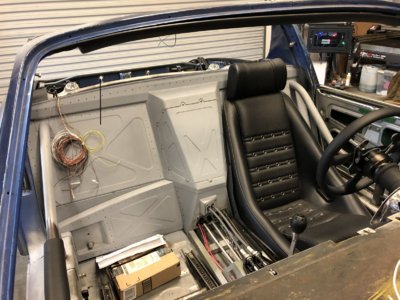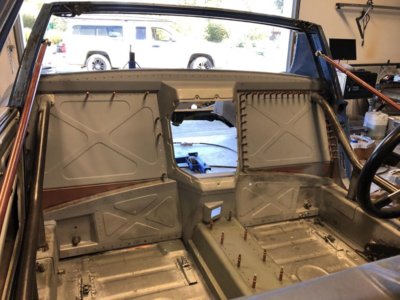a couple comments, on the front, it also takes the load from the springYes, material fatigue is the cause of these failures. Spot welding the washer to the top might have been expedient, but fully welding a larger washer would have made all the difference. If they had put sufficient support under the stamped mount as well it would be much more robust as that would move the load from the top to the sides.
Note the size of the support metal on the underside of the front fenders as show in this photo of Markos' NOS fender attached below and also in this post: https://e9coupe.com/forum/threads/pending-30yo-nos-inner-fenders.39718/
Yes, the engine is up front and there are more cornering forces than the rear has to handle, but this under plate for the front shock is an order of magnitude larger than the washer in the rear, has stiffening ridges, a shape that curves 90° to spread the load to the side walls and edge welds in addition to many more spot welds.
Simply welding around the edge of the OEM washer at the top of the stock rear mount will greatly enhance the distribution of forces away from the small spot welds and the center where the shock is mounted, but if there are already cracks forming under the washer, that may not be enough. If we drill out the spot welds and examine the underlying metal, we could weld up any existing cracks before adding additional metal to strengthen this mount.
It might be possible to use eddy current testing or X-rays to look for cracks, but the cost of that would likely far outweigh the cost of realizing that the design is insufficient for half a century of spirited driving and simply doing the repair/upgrade.
To quote my mechanical engineer friend who's now had a look at Autokunst's photos of his clean rear shot mounts:
Looks like the radial cracks are OEM as well:
View attachment 134454
The metal at the top of the stamping would have already been thinned from punching it into that deep well, then the center hole was peeled back to form a hem. And the meager spot welds holding the "washer" on don't pack it for the term.
I also suspect that if the washer was installed on the backside of this feature instead of on top, it would have made for a stronger assembly. But that would have complicated the welding operation, and affected the ride height, of course.
My thought is that the load should be moved at least out onto the curved part of the mount, and preferably down onto the sides so the loads will be along the surface of the sheet metal rather than at 90° to it. Running a few additional beads around the outside of the OEM washer would be one way of expanding the diameter of the steel supporting structure. Think of it as additive manufacturing in situ. But we are still left with using 50 year old metal with unknown stresses and fatigue patterns that could still fail.
My engineer friend and I have talked about a star shaped part that would distribute the forces over a larger area of the shock mount and would allow for much greater area of weld bead. And unlike getting a flat disk pressing into a cup shape, this would be easier to shape, once the pattern is cut by laser, plasma or water jet. It wouldn't look stock but my elephant skins are intact so the towers shouldn't be visible. I've got a basic plasma cutter so once I get some stock that's the right thickness, I think I'll cut some of these out and see how they might work for this. Welding the back side won't be fun, but should be doable.
One alternative would be to make the piece small enough to fit inside the tube and weld it from below. Not fun, but with longer legs, it can be welded primarily at the bottom rather than up at the top. I don't think the change in height would be too problematic.
View attachment 134443View attachment 134445View attachment 134444
there is mention of ride height, I don't think that would be affected, this is only a shock
The star thing you are showing, that is what I was suggesting, only glued in from the bottom




